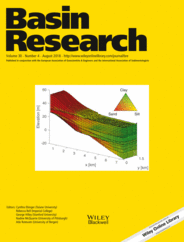
Full text loading...
 , Pieter Vermeesch5, Zengjie Zhang1, Juxing Zhao1, Jan R. Wijbrans2
, Pieter Vermeesch5, Zengjie Zhang1, Juxing Zhao1, Jan R. Wijbrans2
The geometry and evolution of rivers originating from the Tibetan plateau are influenced by topography and climate change during the India‐Asia collision. The Yangtze River is the longest among these rivers and formed due to capturing many rivers on the eastern Tibetan Plateau by the middle Yangtze. The timing of these capture events is still controversial. Here, we use detrital muscovite 40Ar/39Ar and zircon U–Pb ages to constrain the provenance of late Cenozoic sediments in the Jianghan Basin in the middle reaches of the Yangtze River. The combined data suggest that late Pliocene sediments were mainly derived from a local source in the Jianghan Basin including the Dabie Shan. The middle Pleistocene sediments were derived from the Min River west of the Three Gorges. This implies that at least one river, perhaps the palaeo‐Han River, originating from the Dabie Shan region, flowed through the centre of the Jianghan Basin during the late Pliocene. The appearance of sediment from the Min River in the Jianghan Basin somewhere between late Pliocene and middle Pleistocene suggests that the Three Gorges section of the Yangtze River was formed somewhere between late Pliocene and middle Pleistocene (N2– Q2).

Article metrics loading...

Full text loading...
References


Data & Media loading...
Supplements

